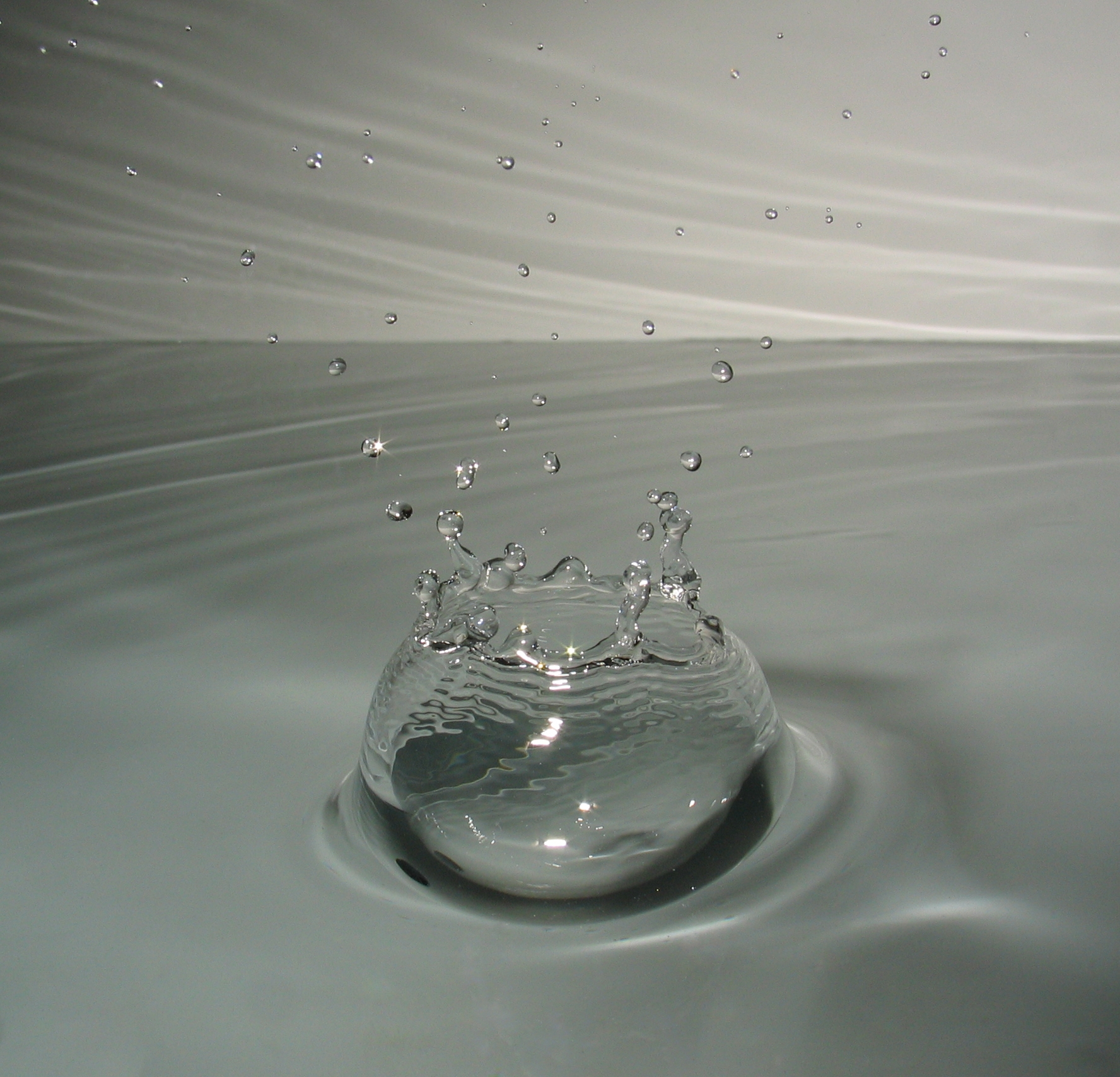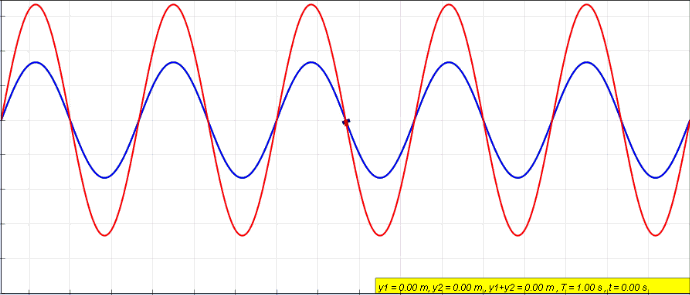|
Bjerknes Force
Bjerknes forces are translational forces on bubbles in a sound wave. The phenomenon is a type of acoustic radiation force. ''Primary'' Bjerknes forces are caused by an external sound field; ''secondary'' Bjerknes forces are attractive or repulsive forces between pairs of bubbles in the same sound field caused by the pressure field generated by each bubble volume's oscillations. They were first described by Vilhelm Bjerknes in his 1906 ''Fields of Force''.Bjerknes, V. (1906). Fields of force. General Books. Hydrodynamics – electromagnetism analogy In ''Fields of Force'' Bjerknes lay out geometrical and dynamical analogies between the Maxwell's theory of electromagnetism and hydrodynamics. In the light of these analogies the Bjerknes forces are being predicted. Principle of kinematic buoyancy Bjerknes writes:"Any body which participates in the translatory motion of a fluid mass is subject to a kinematic buoyancy equal to the product of the acceleration of the translatory motio ... [...More Info...] [...Related Items...] OR: [Wikipedia] [Google] [Baidu] |
Bubble (physics)
A bubble is a :wikt:globule, globule of a gas substance in a liquid. In the opposite case, a globule of a liquid in a gas, is called a drop (liquid), drop. Due to the Marangoni effect, bubbles may remain intact when they reach the surface of the immersive substance. Common examples Bubbles are seen in many places in everyday life, for example: * As spontaneous nucleation of supersaturated carbon dioxide in soft drinks * As vapor in boiling water * As air mixed into agitated water, such as below a waterfall * As sea foam * As a soap bubble * As given off in chemical reactions, e.g., baking soda + vinegar * As a gas trapped in glass during its manufacture * As the indicator in a spirit level * As bubble gum Physics and chemistry Bubbles form and coalesce into globular shapes because those shapes are at a lower energy state. For the physics and chemistry behind it, see nucleation. Appearance Bubbles are visible because they have a different refractive index (RI) than the surrou ... [...More Info...] [...Related Items...] OR: [Wikipedia] [Google] [Baidu] |
Rayleigh–Plesset Equation
In fluid mechanics, the Rayleigh–Plesset equation or Besant–Rayleigh–Plesset equation is a nonlinear ordinary differential equation which governs the dynamics of a spherical bubble in an infinite body of incompressible fluid. Its general form is usually written aswhere :\rho_L is the density of the surrounding liquid, assumed to be constant :R(t) is the radius of the bubble :\nu_L is the kinematic viscosity of the surrounding liquid, assumed to be constant :\sigma is the surface tension of the bubble-liquid interface :\Delta P(t) = P_\infty(t) - P_B(t), in which, P_B(t) is the pressure within the bubble, assumed to be uniform and P_\infty(t) is the external pressure infinitely far from the bubble Provided that P_B(t) is known and P_\infty(t) is given, the Rayleigh–Plesset equation can be used to solve for the time-varying bubble radius R(t). The Rayleigh–Plesset equation can be derived from the Navier–Stokes equations under the assumption of spherical symmetry. It ... [...More Info...] [...Related Items...] OR: [Wikipedia] [Google] [Baidu] |
Node (physics)
A node is a point along a standing wave where the wave has minimum amplitude. For instance, in a vibrating guitar string, the ends of the string are nodes. By changing the position of the end node through frets, the guitarist changes the effective length of the vibrating string and thereby the note played. The opposite of a node is an antinode, a point where the amplitude of the standing wave is at maximum. These occur midway between the nodes. Explanation Standing waves result when two sinusoidal wave trains of the same frequency are moving in opposite directions in the same space and interfere with each other. They occur when waves are reflected at a boundary, such as sound waves reflected from a wall or electromagnetic waves reflected from the end of a transmission line, and particularly when waves are confined in a resonator at resonance, bouncing back and forth between two boundaries, such as in an organ pipe or guitar string. In a standing wave the nodes are ... [...More Info...] [...Related Items...] OR: [Wikipedia] [Google] [Baidu] |
Antinode
A node is a point along a standing wave where the wave has minimum amplitude. For instance, in a vibrating guitar string, the ends of the string are nodes. By changing the position of the end node through frets, the guitarist changes the effective length of the vibrating string and thereby the note played. The opposite of a node is an antinode, a point where the amplitude of the standing wave is at maximum. These occur midway between the nodes. Explanation Standing waves result when two sinusoidal wave trains of the same frequency are moving in opposite directions in the same space and interfere with each other. They occur when waves are reflected at a boundary, such as sound waves reflected from a wall or electromagnetic waves reflected from the end of a transmission line, and particularly when waves are confined in a resonator at resonance, bouncing back and forth between two boundaries, such as in an organ pipe or guitar string. In a standing wave the nodes are a se ... [...More Info...] [...Related Items...] OR: [Wikipedia] [Google] [Baidu] |
Minnaert Resonance
The Minnaert resonance is a phenomenon associated with a gas bubble pulsating at its natural frequency in a liquid, neglecting the effects of surface tension and viscous attenuation. It is the frequency of the sound made by a drop of water from a tap falling in water underneath, trapping a bubble of air as it falls. The natural frequency of the entrapped air bubble in the water is given by : f = \cfrac\left(\cfrac\right)^ where a is the radius of the bubble, \gamma is the polytropic coefficient, p_A is the ambient pressure, and \rho is the density of water. This formula can also be used to find the natural frequency of a bubble cloud with a as the radius of the cloud and \rho the difference between the density of water and the bulk density of the cloud. For a single bubble in water at standard pressure (p_A=100~ , ~ \rho=1000~ ), this equation reduces to f a \approx 3.26~m/s , where f~ is the natural frequency of the bubble. The Minnaert formula assumes an ideal gas. Ho ... [...More Info...] [...Related Items...] OR: [Wikipedia] [Google] [Baidu] |
Surface Tension
Surface tension is the tendency of liquid surfaces at rest to shrink into the minimum surface area possible. Surface tension (physics), tension is what allows objects with a higher density than water such as razor blades and insects (e.g. Gerridae, water striders) to float on a water surface without becoming even partly submerged. At liquid–air interfaces, surface tension results from the greater attraction of liquid molecules to each other (due to Cohesion (chemistry), cohesion) than to the molecules in the air (due to adhesion). There are two primary mechanisms in play. One is an inward force on the surface molecules causing the liquid to contract. Second is a tangential force parallel to the surface of the liquid. This ''tangential'' force is generally referred to as the surface tension. The net effect is the liquid behaves as if its surface were covered with a stretched elastic membrane. But this analogy must not be taken too far as the tension in an elastic membrane i ... [...More Info...] [...Related Items...] OR: [Wikipedia] [Google] [Baidu] |
Vapor Pressure
Vapor pressure or equilibrium vapor pressure is the pressure exerted by a vapor in thermodynamic equilibrium with its condensed phases (solid or liquid) at a given temperature in a closed system. The equilibrium vapor pressure is an indication of a liquid's thermodynamic tendency to evaporate. It relates to the balance of particles escaping from the liquid (or solid) in equilibrium with those in a coexisting vapor phase. A substance with a high vapor pressure at normal temperatures is often referred to as '' volatile''. The pressure exhibited by vapor present above a liquid surface is known as vapor pressure. As the temperature of a liquid increases, the attractive interactions between liquid molecules become less significant in comparison to the entropy of those molecules in the gas phase, increasing the vapor pressure. Thus, liquids with strong intermolecular interactions are likely to have smaller vapor pressures, with the reverse true for weaker interactions. The vapor p ... [...More Info...] [...Related Items...] OR: [Wikipedia] [Google] [Baidu] |
Ambient Pressure
The ambient pressure on an object is the pressure of the surrounding medium, such as a gas or liquid, in contact with the object. Atmosphere Within the atmosphere, the ambient pressure decreases as elevation increases. By measuring ambient atmospheric pressure, a pilot may determine altitude (see pitot-static system). Near sea level, a change in ambient pressure of 1 millibar is taken to represent a change in height of . Underwater The ambient pressure in water with a free surface is a combination of the hydrostatic pressure due to the weight of the water column and the atmospheric pressure on the free surface. This increases approximately linearly with depth. Since water is much denser than air, much greater changes in ambient pressure can be experienced under water. Each of depth adds another bar (unit) , bar to the ambient pressure. Ambient-pressure diving is underwater diving exposed to the water pressure at depth, rather than in a pressure-excluding atmospheric diving suit ... [...More Info...] [...Related Items...] OR: [Wikipedia] [Google] [Baidu] |
Polytropic Process
A polytropic process is a thermodynamic process that obeys the relation: p V^ = C where ''p'' is the pressure, ''V'' is volume, ''n'' is the polytropic index, and ''C'' is a constant. The polytropic process equation describes expansion and compression processes which include heat transfer. Particular cases Some specific values of ''n'' correspond to particular cases: * n=0 for an isobaric process, * n=+\infty for an isochoric process. In addition, when the ideal gas law applies: * n=1 for an isothermal process, * n=\gamma for an isentropic process. Where \gamma is the ratio of the heat capacity at constant pressure (C_P) to heat capacity at constant volume (C_V). Equivalence between the polytropic coefficient and the ratio of energy transfers For an ideal gas in a closed system undergoing a slow process with negligible changes in kinetic and potential energy the process is polytropic, such that p v^ = C where ''C'' is a constant, K = \frac, \gamma = \frac, and with the ... [...More Info...] [...Related Items...] OR: [Wikipedia] [Google] [Baidu] |
Resonant Frequency
Resonance is a phenomenon that occurs when an object or system is subjected to an external force or vibration whose frequency matches a resonant frequency (or resonance frequency) of the system, defined as a frequency that generates a maximum amplitude response in the system. When this happens, the object or system absorbs energy from the external force and starts vibrating with a larger amplitude. Resonance can occur in various systems, such as mechanical, electrical, or acoustic systems, and it is often desirable in certain applications, such as musical instruments or radio receivers. However, resonance can also be detrimental, leading to excessive vibrations or even structural failure in some cases. All systems, including molecular systems and particles, tend to vibrate at a natural frequency depending upon their structure; when there is very little damping this frequency is approximately equal to, but slightly above, the resonant frequency. When an oscillating force, ... [...More Info...] [...Related Items...] OR: [Wikipedia] [Google] [Baidu] |
Harmonic Oscillator
In classical mechanics, a harmonic oscillator is a system that, when displaced from its equilibrium position, experiences a restoring force ''F'' proportional to the displacement ''x'': \vec F = -k \vec x, where ''k'' is a positive constant. The harmonic oscillator model is important in physics, because any mass subject to a force in stable equilibrium acts as a harmonic oscillator for small vibrations. Harmonic oscillators occur widely in nature and are exploited in many manmade devices, such as clocks and radio circuits. If ''F'' is the only force acting on the system, the system is called a simple harmonic oscillator, and it undergoes simple harmonic motion: sinusoidal oscillations about the equilibrium point, with a constant amplitude and a constant frequency (which does not depend on the amplitude). If a frictional force ( damping) proportional to the velocity is also present, the harmonic oscillator is described as a damped oscillator. Depending on the friction ... [...More Info...] [...Related Items...] OR: [Wikipedia] [Google] [Baidu] |
Standing Wave
In physics, a standing wave, also known as a stationary wave, is a wave that oscillates in time but whose peak amplitude profile does not move in space. The peak amplitude of the wave oscillations at any point in space is constant with respect to time, and the oscillations at different points throughout the wave are in phase. The locations at which the absolute value of the amplitude is minimum are called node (physics), nodes, and the locations where the absolute value of the amplitude is maximum are called antinodes. Standing waves were first described scientifically by Michael Faraday in 1831. Faraday observed Faraday wave, standing waves on the surface of a liquid in a vibrating container. Franz Melde coined the term "standing wave" (German: ''stehende Welle'' or ''Stehwelle'') around 1860 and demonstrated the phenomenon in his classic experiment with vibrating strings. This phenomenon can occur because the medium is moving in the direction opposite to the movement of th ... [...More Info...] [...Related Items...] OR: [Wikipedia] [Google] [Baidu] |






